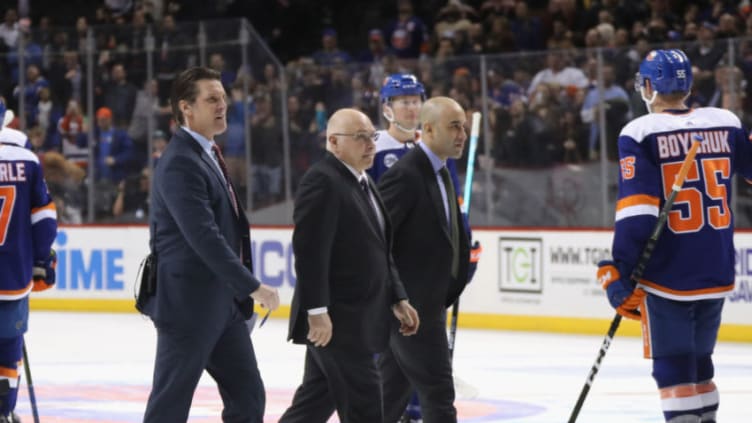New York Islanders Play in Third Period Is A Weakness

Looking at goal and shot differentials by period throughout the 2018-19 season, what is the New York Islanders weakest 20 minutes? Surprisingly, it’s the third period.
Against the Buffalo Sabers, the New York Islanders played one of their worst second periods of the season. They looked absolutely amateur. They were lucky to leave the period only down a goal.
Over the course of the season, to me, it’s felt as though the Islanders haven’t been able to string together a good second period for some time. But I wanted to make sure that wasn’t some sort of failed eye test.
I looked at the goal and shot differentials per period to try and confirm what I thought I was seeing. Turns out the New York Islanders haven’t been great in the second period, but in fact, its the third period that’s been worse.
Third Is Worse
What I was looking for was if the New York Islanders are routinely outshot (and thus frequently chasing the play) and if they’re outscored (and thus frequently chasing the game) in any given period.
Again, I thought the Islanders were particularly weak in the second period. The game against the Buffalo Sabres was, to me, yet another example of this. But when I pulled the numbers it painted a different picture.
The second period was, in fact, weak with a -41 shot differential and a +4 goal differential. But in the third period, the New York Islanders hold a -58 shot differential through the 56 game season and their smallest goal differential (+3).
It makes you think of previous Isles teams that were routinely poor in the third period. Often chasing the puck around and thus the game. Usually culminating in a goal against in the closing few minutes to either tie the game or deliver an ‘L’.
This is an incredibly simple exercise (one I will expand on as the season progresses). But it helps paint a simple picture. There’s a drop off that happens in the third period for the Islanders. One that Barry Trotz will surely want his team to fix as they approach the postseason.
Maybe the explanation for this drop off is that other teams go into the third period trailing the Islanders and are forced to turn up the pressure, and do. Although, even if that’s the case, the Isles need to find a way to close that shot differential.
Want your voice heard? Join the Eyes On Isles team!
If the New York Islanders are going to race out to leads in the first period, they have to find a way to more effectively manage a game. A -58 shot differential in the third period has to be narrowed.